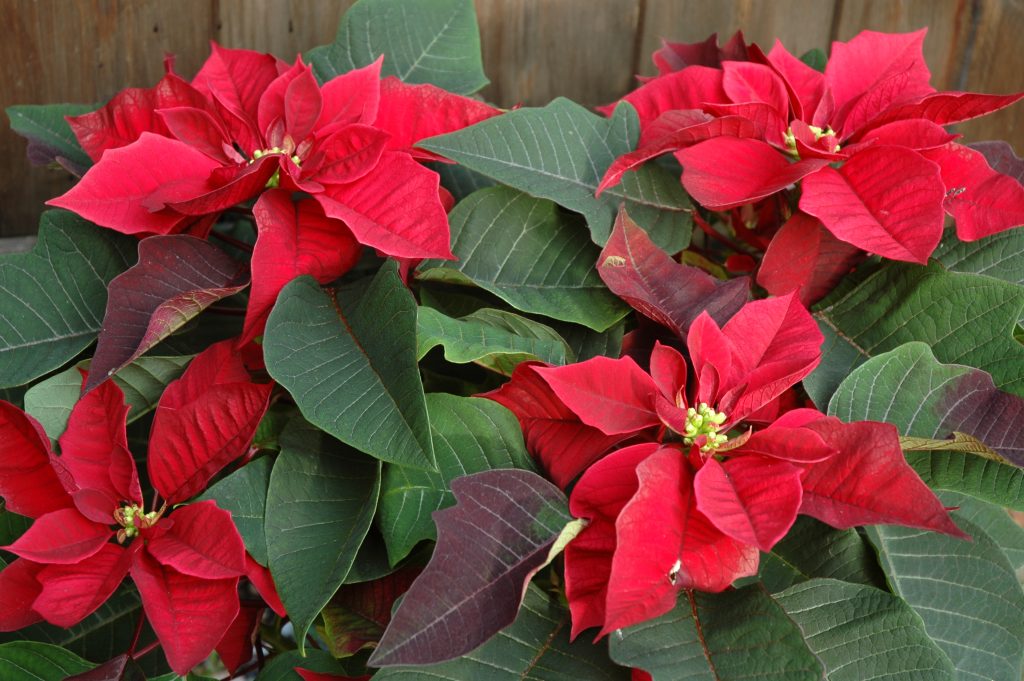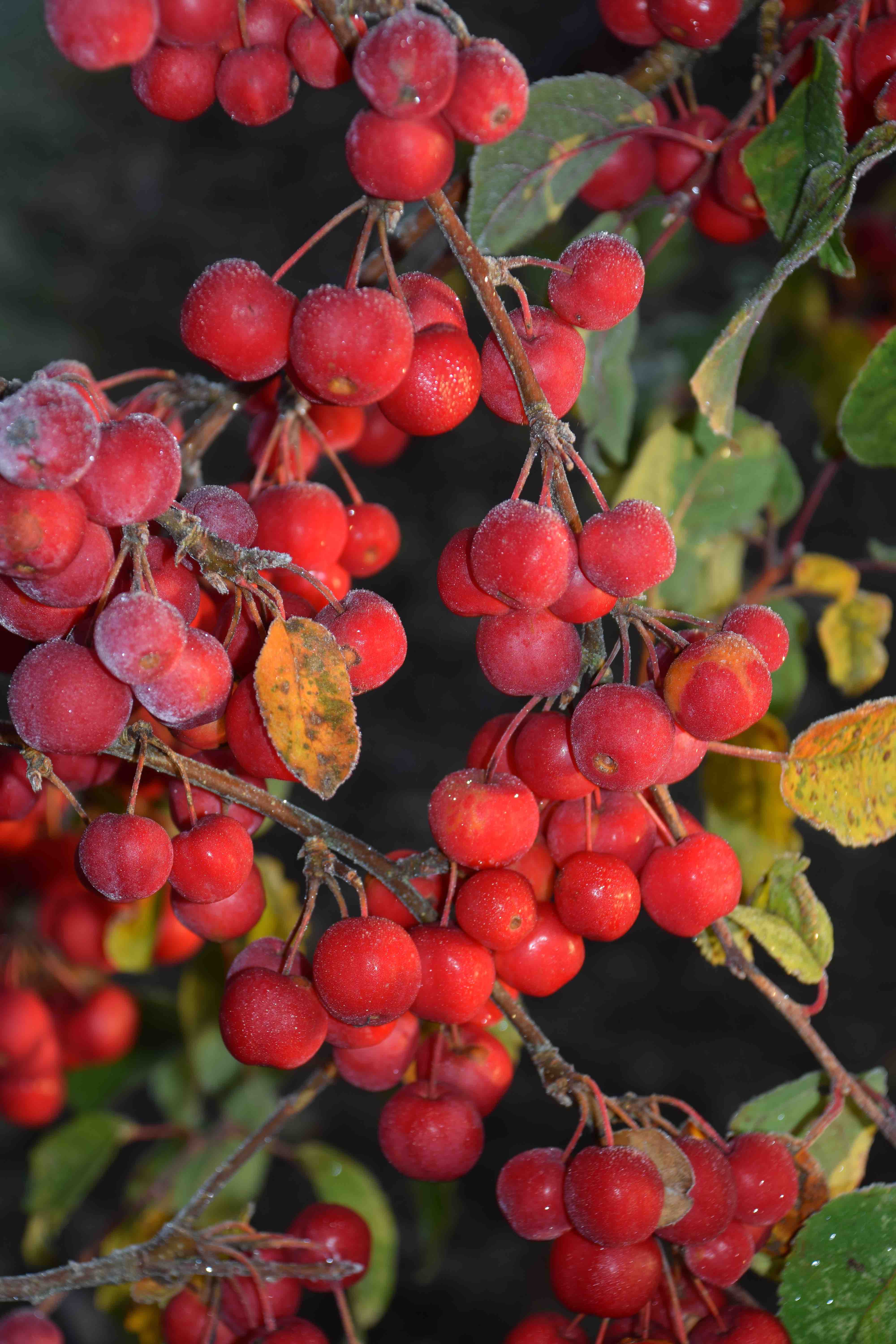
Winter is impossible to ignore and we can’t fight it. So why not embrace it and plant something that’ll look good and cheer us up, just when we need colour and fragrance. It is surprising how many plants are looking great right now and here are just a few of the plants that are making me happy in my garden this week. Regular readers will know that my garden is quite new, that the soil is rather heavy and can be wet in winter so all these plants are easy to grow. They also make great gifts for Christmas.
Crab apples (malus) are a good choice for any garden. They are generally small trees, tolerate most soils, including clay and chalk, and they have many seasons of beauty. Their spring blossom is beautiful and appreciated by bees and their fruit are abundant and beautiful. The best for jelly is usually said to be ‘John Downie’ and the fruits are larger than most, but ‘Golden Hornet’, with masses of rich yellow fruit, is possibly the most popular. But there are lots of new kinds, that are resistant to common apple problems, such as scab and mildew, and are much better choices. ‘Evereste’ is a great choice but I planted ‘Gorgeous’ which is currently covered in cherry-like, scarlet apples. This year I made jelly with them and it is delicious and a beautiful pink colour. There is no better tree for a small garden. It is also, like all crab apples, a perfect pollinator for eating apples. I find that the birds don’t eat the fruit till they start to rot on the tree, usually in February, so there is plenty of time to make jelly or wine!
National `Tree Week is at the end of the month and autumn is the perfect time to plant trees and shrubs
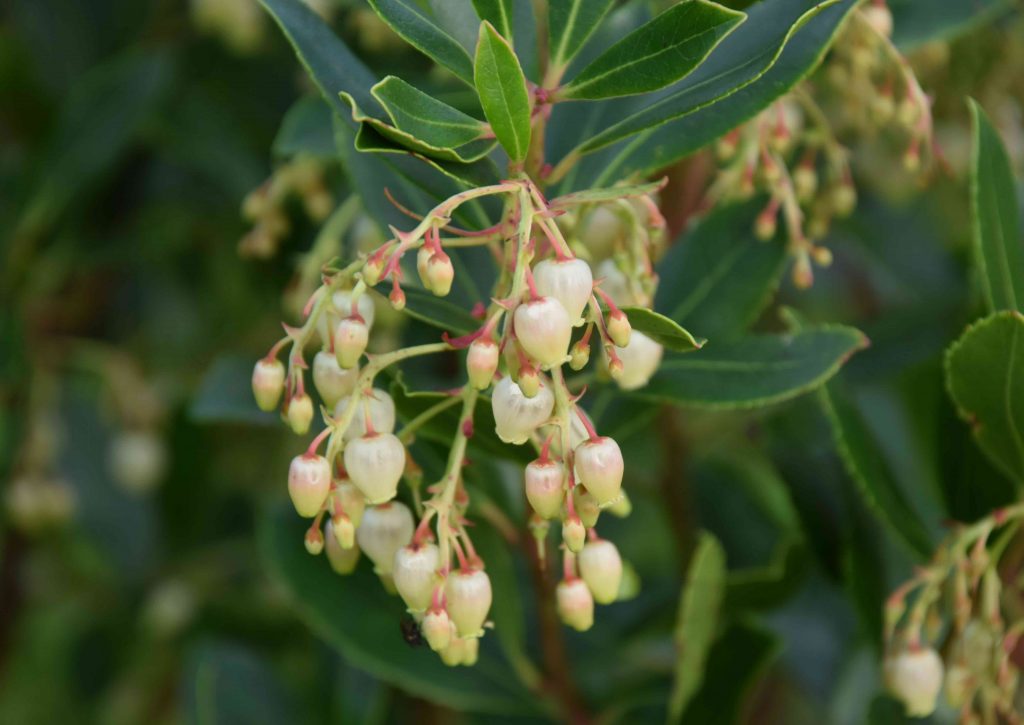
Arbutus unedo is another small tree with interest all year. Commonly called the strawberry tree, because of the shape and colour of the fruits, but not their taste, this is a small, bushy tree. It is especially valuable because it is evergreen, and it blooms in November, the same time as the fruits ripen. It is in the heather family but, unusually, is tolerant of lime. The creamy flowers are loved by bumblebees, supplying them with a late source of nectar. The bark, on mature plants, is finely textured and cinnamon-coloured. The only problem is that is slow growing and usually only available as small, bushy plants, so you have to be patient. But it blooms when small and is attractive as a bush or a tree. My plant was 40cm high when I put it in four years ago and is now 2m high and will soon be at the stage where I can remove the lower stems to expose the trunk – so you can see that the wait is not too long.
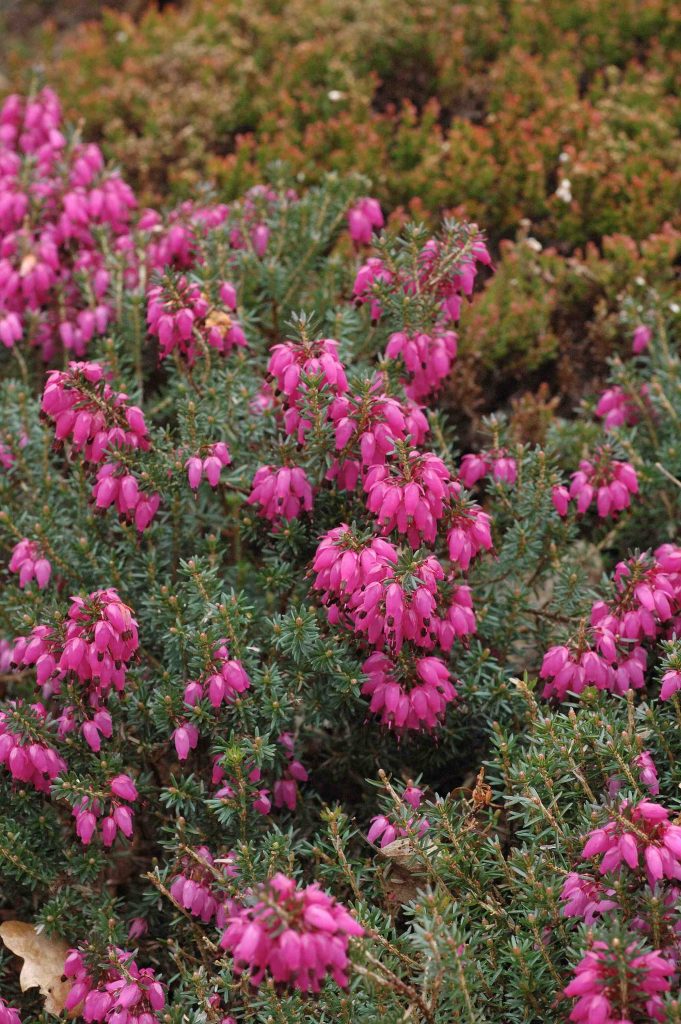
We think of the heather family as hating lime in the soil and most heathers, camellias and rhododendrons do need lime-free soil. But the winter-flowering heathers; Erica carnea, Erica erigena and Erica x darleyensis, thrive in any soil and their flowers open, according to the weather, from November till March. Heathers need a sunny site and will not thrive in shade but are otherwise easy to please. I am not a fan of heathers generally, but I am extending my bed of winter heathers because they are so cheerful in the coldest months of the year. I buy them, often for winter containers with bulbs, and replant them into the garden in spring. Remember that they need a light trim in spring, after flowering, to keep them neat. They are perfect to edge beds or associate with other winter flowers.
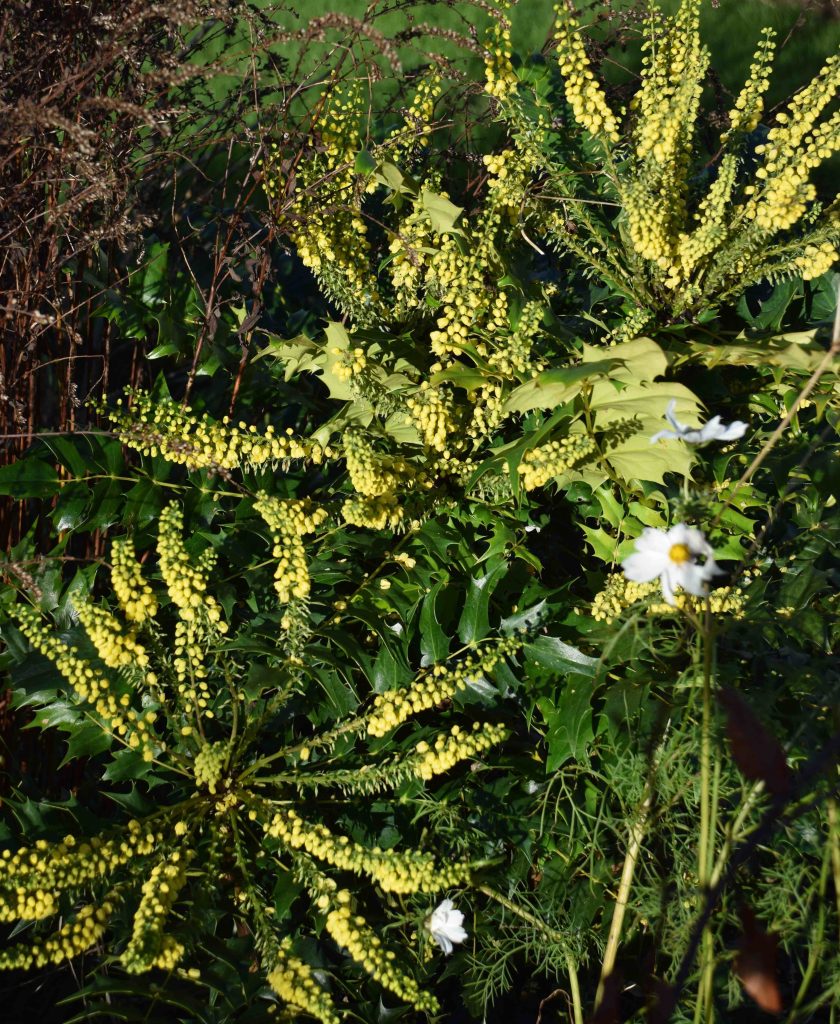
Many winter flowers are fragrant, which makes them even more valuable. I regard mahonia ‘Charity‘ as an essential shrub and it was one of the first shrubs I planted in my garden. The leaves are ferociously prickly but the flowers, that burst from the tops of the stems in November, are dainty and faintly scented. They last for more than a month. Young plants are bushy but, as they grow, the few main stems can become bare, with tufts at the top. I admire this ‘palm-tree’ look but many dislike it. Fortunately mahonias tolerate pruning and all you need to do is cut back old, leggy mahonias to 30-60cm high in March to rejuvenate them. These mahonias grow in sun or part shade but will be more bushy and will flower better in a sunny spot.
If the prickly foliage of ‘Charity’ is putting you off, choose ‘Soft Caress‘ a relatively new variety with slender, harmless leaves. It is a smaller plant and blooms in autumn, with similar flowers. It is a good choice for a patio pot in part shade and a perfect gift for a gardener. Like most shrubs, if growing in a pot, use John Innes No 3 compost and NOT multipurpose.
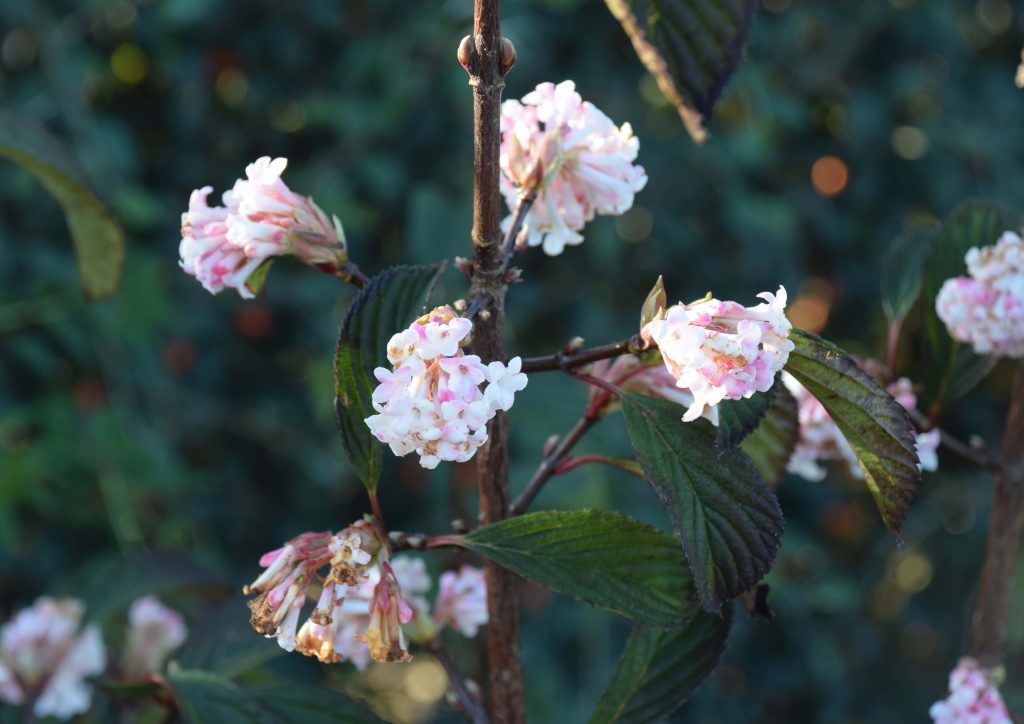
If mahonia ‘Charity’ is in my top ten shrubs for every garden, viburnum ‘Dawn’ has the number one spot. The flowers open, sporadically, according to the weather, from November to March and open pale pink from deep pink buds. They are fragrant and can be picked for the house. When young it is an upright shrub but spreads with age. Then the older shoots can be cut out, at the base, to maintain the compact, upright habit. The foliage is dark and neat but not exceptional. My plant, now two years old, is 1.5m high and starting to bloom well. ‘Charles Lamont’ has slightly larger flowers but not so you would really notice and ‘Deben’ has white flowers. Unfortunately, because the open flowers are browned by frost, ‘Deben’ displays this flaw more obviously than the pink forms. Unopened buds survive frost so that even if the open flowers are browned, lots more open later.
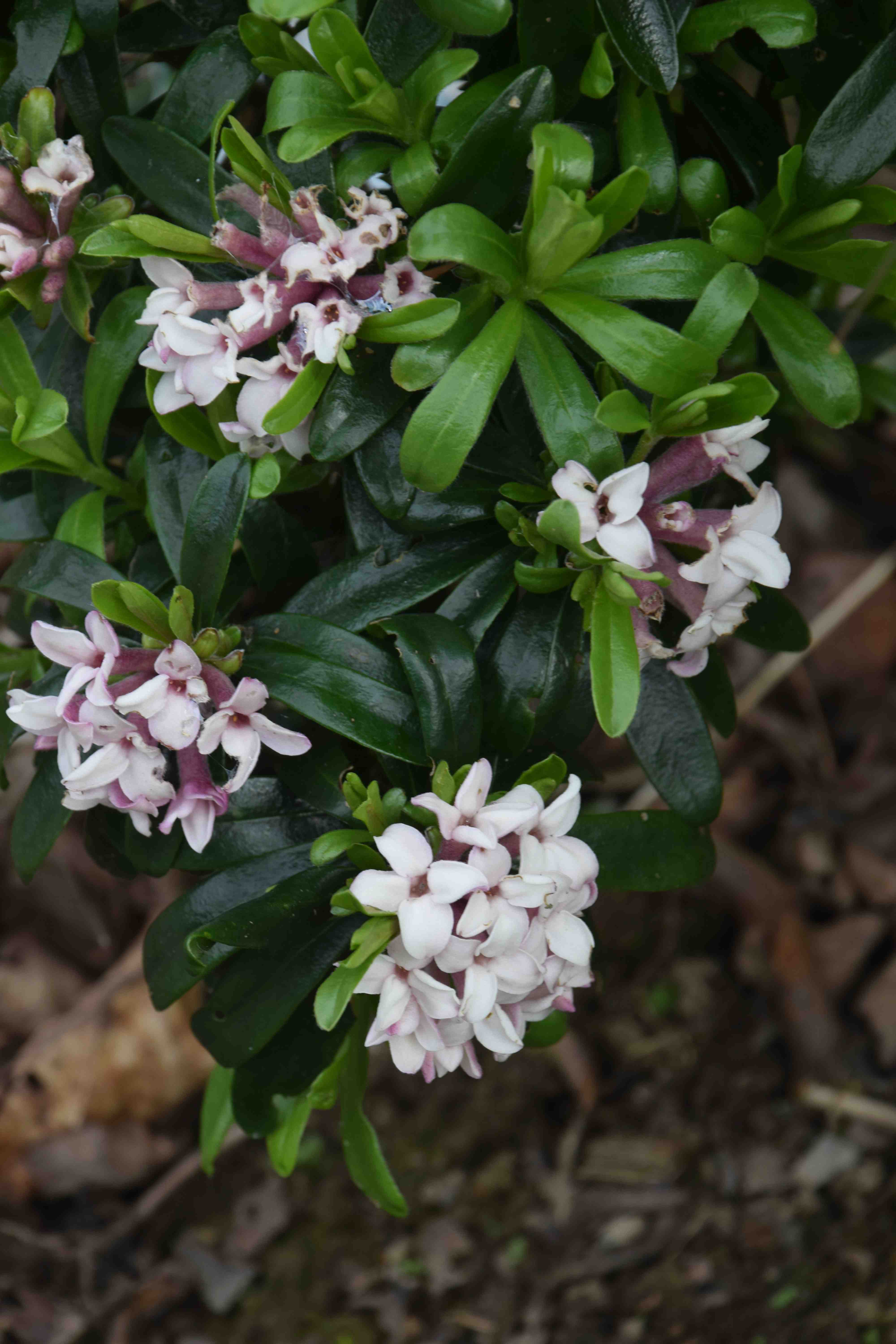
Most daphnes bloom in spring. I will have to wait another month before the sumptuous blooms on Daphne bholua start to open. But ‘Eternal Fragrance‘ which has been in bloom since May, is still covered in flowers. This ‘new’ daphne is truly exceptional for its long season of bloom and it is easy to please too. I confess that the scent is not as good as some others but it is a vigorous, neat, evergreen shrubs that blooms for at least six months! What more could you want?
Well, actually, what I want is more scent! So, in addition to this, I have several other daphnes. The one I love most is Daphne bholua, a semi-evergreen with pink, exquisitely fragrant blooms from January to March. Demand for this always outstrips supply so buy one whenever you see it. For the past two decades I have appreciated this shrub more than almost any other but now there is a new daphne to turn my head.
‘Perfume Princess‘ is a hybrid of Daphne bholua and the slightly tender, but fabulous Daphne odora. It has the best qualities of both and is a truly wonderful plant, evergreen, neat, showy and wonderfully scented. I really rate this shrub. It is a plant I would love to be given as a gift ( I have bought myself one, but wouldn’t mind another) and it makes an ideal Christmas present, with the promise of flowers in a month or so after being given. What other present gets better every year, has zero emissions and no calories?
I am afraid I have strayed from autumn to spring but with lots of plants for winter interest, the seasons simply fly by.
This is not a complete list of winter flowers, remember to visit again and to pop into Nags Hall to see what is for sale and pick up something to brighten your winter garden or for a thoughtful gift.
Next week:
Those essential Christmas pot plants
